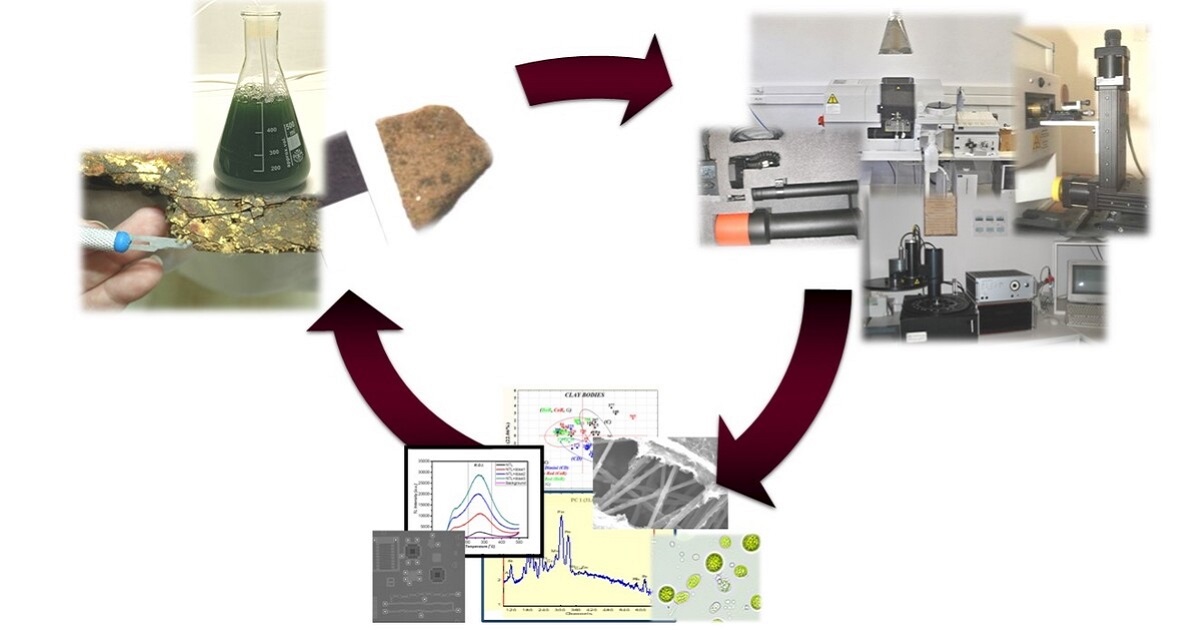Analytical Methods in Natural Sciences and Archaeometry
A special issue of Methods and Protocols (ISSN 2409-9279).
Deadline for manuscript submissions: 30 September 2026 | Viewed by 3408

Special Issue Editors
Interests: archaeometry; luminescence; dosimetry; characterization; chemical engineering; circular economy
Interests: pigments; binders; spectroscopy; aging; dating
Special Issues, Collections and Topics in MDPI journals
Interests: archaeometry; absolute dating; material characterization
Special Issues, Collections and Topics in MDPI journals
Special Issue Information
Dear Colleagues,
Ongoing advancements emerge within the broad field of Natural Sciences, continuously pushing the existing boundaries towards sensitivity, precision, and non-destructive analysis. Furthermore, existing methods and protocols are redefined, enhancing our knowledge of the natural world and materials crafted by human hands.
Archaeometry, as an interdisciplinary science where Natural Sciences meet, bridges the gap between analytical techniques and cultural heritage studies, offering innovative approaches to the study and conservation of historical artifacts, structures, and environments, emphasizing in situ and/or non-destructive measurements and sample quantity minimization. This synergy drives the development of robust and adaptive methods that are applicable across diverse scientific domains.
This Special Issue of Methods and Protocols, entitled “Analytical Methods in Natural Sciences and Archaeometry”, aims to provide a comprehensive overview of the latest advancements and applications of said fields. We invite researchers and scientists to submit original research, review articles, and methodological papers that present new or updated methods/techniques in the fields of Physics, Chemistry, Biology, Geology, Computational Methods and Archaeometry that enhance our understanding of processes and materials. Submissions should be related to the collection, analysis and interpretation of data in the above fields, aiming to shed light on the composition or the properties of the materials studied. Special emphasis will be placed on novel approaches that promote interdisciplinary collaboration, sustainability, and accuracy.
By bringing together cutting-edge research and practical insights, this collection aims to highlight the pivotal role of analytical methods in expanding our knowledge and fostering innovation across the natural and human-made world.
We look forward to receiving your contributions.
Dr. Nikolaos A. Kazakis
Dr. Lamprini Malletzidou
Dr. Nikolaos Laskaris
Guest Editors
Manuscript Submission Information
Manuscripts should be submitted online at www.mdpi.com by registering and logging in to this website. Once you are registered, click here to go to the submission form. Manuscripts can be submitted until the deadline. All submissions that pass pre-check are peer-reviewed. Accepted papers will be published continuously in the journal (as soon as accepted) and will be listed together on the special issue website. Research articles, review articles as well as short communications are invited. For planned papers, a title and short abstract (about 250 words) can be sent to the Editorial Office for assessment.
Submitted manuscripts should not have been published previously, nor be under consideration for publication elsewhere (except conference proceedings papers). All manuscripts are thoroughly refereed through a single-blind peer-review process. A guide for authors and other relevant information for submission of manuscripts is available on the Instructions for Authors page. Methods and Protocols is an international peer-reviewed open access semimonthly journal published by MDPI.
Please visit the Instructions for Authors page before submitting a manuscript. The Article Processing Charge (APC) for publication in this open access journal is 1800 CHF (Swiss Francs). Submitted papers should be well formatted and use good English. Authors may use MDPI's English editing service prior to publication or during author revisions.
Keywords
- spectroscopy
- microscopy
- chromatography
- X-rays
- thermal analysis
- luminescence
- machine learning
Benefits of Publishing in a Special Issue
- Ease of navigation: Grouping papers by topic helps scholars navigate broad scope journals more efficiently.
- Greater discoverability: Special Issues support the reach and impact of scientific research. Articles in Special Issues are more discoverable and cited more frequently.
- Expansion of research network: Special Issues facilitate connections among authors, fostering scientific collaborations.
- External promotion: Articles in Special Issues are often promoted through the journal's social media, increasing their visibility.
- Reprint: MDPI Books provides the opportunity to republish successful Special Issues in book format, both online and in print.
Further information on MDPI's Special Issue policies can be found here.








